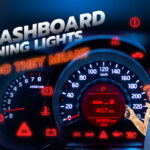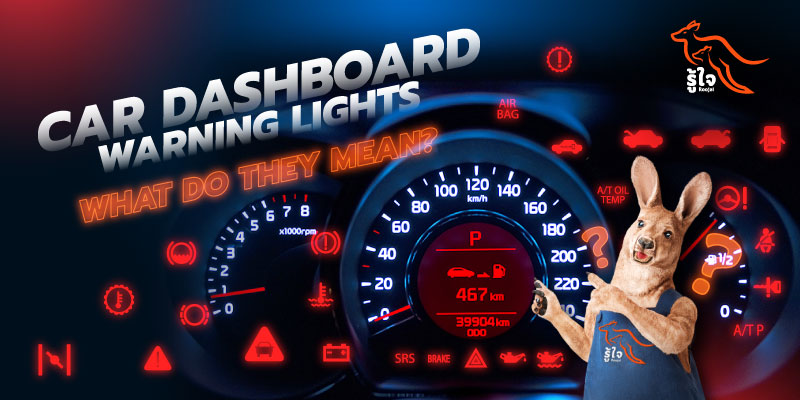
Driving is more than just going from point A to point B; it’s about staying attuned to the signals your car sends you. The dashboard serves as your car’s communication centre, displaying symbols that provide vital information about its condition. While most car dashboard signs turn off after you start your car, any that remain lit while driving require your attention. This guide will help you interpret these dashboard panel symbols, so you can address issues promptly and maintain your vehicle’s optimal performance.
1. Check engine warning light
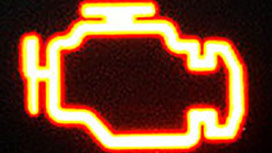
What it means: This light briefly illuminates when you turn the ignition on. If it stays on, there might be an issue with the emission control system or engine, even if the car seems to run fine. Ignoring it can lead to higher fuel consumption, pollution, and serious engine damage.
Common causes:
- Faulty oxygen sensor
- Loose gas cap
- Catalytic converter issues
- Mass airflow sensor problems
What to do: If this warning light appears while you’re driving, pull over to a safe location, turn off the engine, and then restart it. If the light remains on, take your car to a service centre as soon as possible to diagnose the issue. In the meantime, drive gently, avoid hard acceleration, and do not drive at high speeds.
Maintenance tips: To prevent this issue, regularly check and replace the air filter, ensure the gas cap is secure after refueling, and follow your car’s maintenance schedule. Use high-quality fuel and oil, plus monitor other dashboard lights for early signs of trouble.
2. Low oil pressure warning light
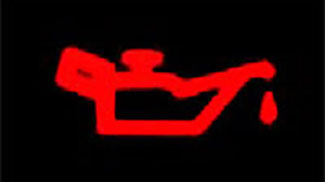
What it means: This light should turn off once the engine is running. If it starts flashing, it indicates that the oil pressure is fluctuating. If the light stays on while the engine is running, it means the oil pressure is low, which can cause serious damage to the engine.
Common causes:
- Low oil level
- Faulty oil pump
- Clogged oil filter
What to do: Pull over safely and turn off the engine as soon as possible. Open the hood and check the oil level. While oil level and oil pressure are not directly related, a very low oil level can cause low oil pressure under certain conditions. If needed, add oil to the maximum level on the dipstick. Restart the engine and observe the warning light. If it does not go out within 10 seconds, turn off the engine again. This signals a problem that needs to be repaired before you can safely drive the vehicle.
Maintenance tips: To prevent low oil pressure, regularly check your oil level and top it up as needed, follow your car’s maintenance schedule, and use high-quality oil and filters. Regular oil changes can also help maintain proper oil pressure.
3. Car battery warning light
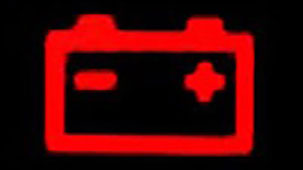
What it means: If this light is bright while the engine is running, it indicates that there may be a problem with the vehicle’s charging system, often suggesting that the battery isn’t charging correctly or that there’s an issue with the electrical system. Ignoring this warning can lead to a completely drained battery, leaving you stranded and unable to start the engine.
Common causes:
- Dead or expired battery
- Broken or loose alternator belt
- Damaged alternator.
What to do: Immediately turn off all electrical devices such as the radio and air conditioner. Keep the engine running and be careful not to let it stop, as restarting the engine will drain the battery quickly. By minimising the use of electrical devices, you can drive for a few more kilometres before the battery is completely depleted. Head to a gas station or garage that can repair the charging system.
Maintenance tips: Regularly check the condition of your battery and alternator belt and replace them as needed. Ensure that the alternator is functioning properly during routine maintenance checks.
Don’t get stranded with a dead battery; learn what to do when your car battery dies and get back on the road quickly. Knowing these steps can save you time and hassle in an emergency.
4. Handbrake and brake system warning light
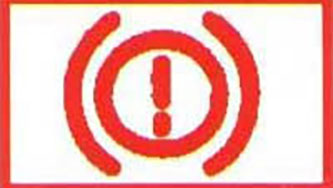
What it means: This light indicates either the handbrake is engaged or there’s a brake system issue. Driving with the handbrake on can damage brakes and tyres. If the light appears at other times, it may signal low brake fluid or another brake problem.
Common causes:
- Low brake fluid in the reservoir
- Brake fluid leak
- Worn brake pads
What to do: First, ensure the handbrake is fully released. If the light remains on, check the brake fluid level and top it up if necessary. Observe the brake pedal; if it feels unusually deep, there may be a brake fluid leak or worn brake pads. If you notice any abnormalities with the brake pedal, have the brake system inspected and repaired immediately. The brake system is designed with a two-circuit system, so if one circuit fails, the other can still operate, but you will notice a deeper brake pedal, longer braking distances, and the need for more force to brake.
Maintenance tips: Regularly check the brake fluid level and top it up as needed. Inspect the brake pads for wear and replace them when necessary. Follow your car’s maintenance schedule to ensure the brake system is in good condition.
5. SRS airbag system warning light

What it means: This light should turn on for 5-6 seconds when you switch on the ignition, then turn off, indicating normal function. If it doesn’t light up, stays on after starting the engine, or flashes while driving, there’s an issue with the airbag system, which also affects the automatic seat belt retraction in an accident.
Common causes:
- Faulty sensors
- Wiring problems
- Malfunctioning control unit
What to do: If this warning light behaves abnormally, take your car to a service centre immediately for an inspection. The airbag may not deploy in the event of an accident, which is a serious safety concern.
Maintenance tips: Regularly check the airbag system during routine maintenance. Ensure that any recalls related to the airbag system are addressed promptly. Keep the area around the airbag sensors clean and free from obstructions.
6. Low fuel warning light
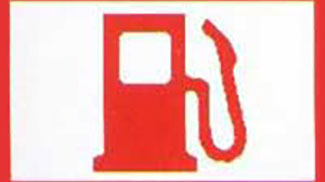
What it means: This car dashboard sign indicates that your fuel level is low, typically less than 7-8 litres, depending on the car brand.
Common causes:
- Low fuel level
- Faulty fuel gauge
- Fuel sensor issues
What to do: When this light comes on, you should refuel as soon as possible to avoid running out of gas. Plan to stop at the nearest gas station to fill up your tank.
Maintenance tips: To avoid this situation, try to refuel when your tank is about a quarter full. Regularly check your fuel gauge and plan your refuelling stops, especially on long trips.
Understanding your car’s dashboard warning lights is crucial for maintaining your vehicle’s health and safety on the road. If you ever find yourself in need of assistance, having access to reliable roadside assistance can be invaluable.
7. Anti-lock braking system (ABS) warning light
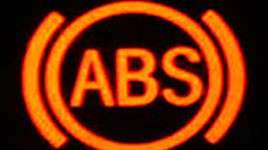
What it means: The ABS warning light helps prevent the wheels from locking and skidding during hard braking, allowing you to maintain control of your vehicle. his light usually stays on for 2-3 seconds when you turn the key to the ON and Start positions. If it lights up at other times, it indicates a problem with the ABS.
Common causes:
- Faulty sensors
- Damaged wiring
- Malfunctioning ABS control module
What to do: If the ABS warning light comes on while driving, have your vehicle serviced as soon as possible. While the normal braking system will still function, the ABS will not, which can affect your ability to control the vehicle during hard braking.
Maintenance tips: Regularly check the ABS during routine maintenance. Ensure that the ABS sensors and wiring are in good condition and address any issues promptly.
8. Electric power steering (EPS) warning light
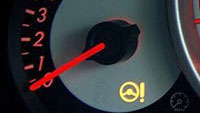
What it means: If this car dashboard symbol comes on while the engine is running or while you’re driving, it indicates a problem with the power steering electrical system. This system uses an electric motor to assist the driver in steering the vehicle, making it easier to turn the steering wheel, especially at low speeds.
Common causes:
- Issues with the power steering motor
- Faulty power steering control module
- Electrical problems like blown fuses or damaged wiring
What to do: Pull over to a safe location, turn off the engine, and restart it. If the light remains on or comes back on after driving for a while, have your vehicle inspected. You will likely notice heavy steering, making it harder to turn the vehicle.
Maintenance tips: Regularly check the power steering fluid level and ensure the electrical connections are secure. Follow your vehicle’s maintenance schedule to keep the power steering system in good condition.
9. High-temperature warning light
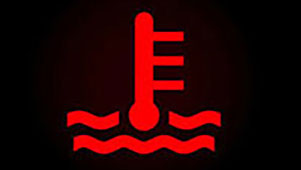
What it means: This light indicates that your engine is overheating. It may flash when driving up a slope or using high engine speed for an extended period, signalling that the coolant temperature is high. Ignoring this warning can lead to engine overheating, which can cause severe engine damage and costly repairs.
Common causes:
- Low coolant levels
- Faulty thermostat
- Malfunctioning radiator fan
- Blocked radiator.
What to do: Reduce your speed to prevent the engine from overheating. If the light stays on, pull over safely and have the coolant system checked. Do not continue driving, as this can cause serious engine damage.
Maintenance tips: Regularly check the coolant level and top it up if necessary. Ensure the radiator and cooling system are in good condition and follow your vehicle’s maintenance schedule.
For added peace of mind, consider our comprehensive car insurance that covers a wide range of potential issues, ensuring you’re protected in any situation. Enjoy the freedom to drive without worry, knowing you have reliable coverage every step of the way.
By familiarising yourself with your car’s dashboard symbols and warning lights, you can ensure a safer and more efficient driving experience. Staying proactive about vehicle maintenance and addressing issues promptly can save you from costly repairs and potential hazards on the road.
For more info on insurance policies, tips, and updates on car care, follow Roojai on our Facebook page or add us on LINE (Official LINE ID: @roojai). Stay informed and drive with confidence!

